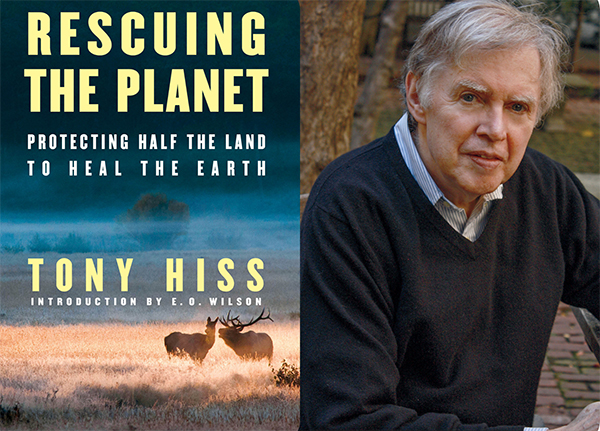Jim Levitt and Tony Hiss teamed up to explore a pair of bold ideas. The first is the audacious large landscape concept, hatched by Benton MacKaye 100 years ago, to create an Appalachian Trail from Maine to Georgia. Levitt explained how MacKaye’s training at Harvard College and as the first graduate of the Harvard Forestry School prepared the ground for his pioneering initiative — and how it can inspire us to meet the challenges of the 21st century.
Hiss then considered how the “half-earth” idea championed by the celebrated Harvard biologist Edward O. Wilson — a thinker every bit as bold as MacKaye — could help lead us through the current crisis, which is a very real threat to the quality of life on earth. The solutions, as Hiss explained, very much depend on the willing collaboration of academics with the private sector, public leaders, inventive NGOs, and very critically, indigenous people. It promises to be a lively and challenging discussion.
Tony Hiss

Tony Hiss is the author of fifteen books, including the award-winning The Experience of Place. He was a staff writer at The New Yorker for more than thirty years, was a visiting scholar at New York University for twenty-five years, and has lectured around the world. In his latest book, Rescuing the Planet: Protecting Half the Land to Heal the Earth, Tony makes the case for why protecting half the land is the way to fix some of the biggest problems facing us in the next century, including the looming impacts of climate change.
Jim Levitt
Jim Levitt is a co-founder and the director of the ILCN (International Land Conservation Network), and the Director of ALPINE, both based at the Lincoln Institute in Cambridge, Massachusetts, USA. In addition, he holds ongoing fellowships at the Harvard Forest, Harvard University, and at the Highstead Foundation, a non-profit advancing land conservation in New England. He has written and edited dozens of articles and four books on land and biodiversity conservation. He has lectured widely on the topic in venues ranging from Santiago, Chile to Beijing, China, and Stockholm, Sweden. He is also engaged in an effort to link land conservation innovators at universities, colleges, and independent research institutions around the globe.
